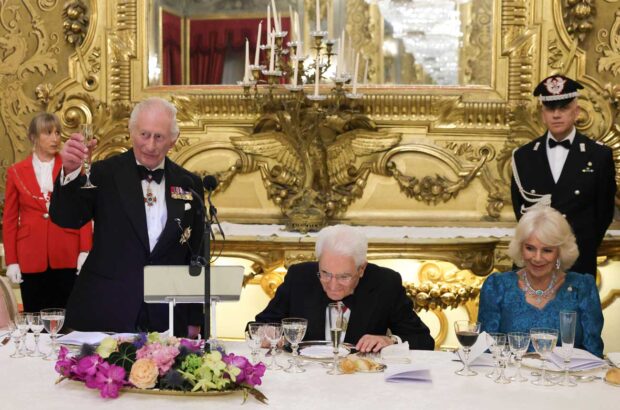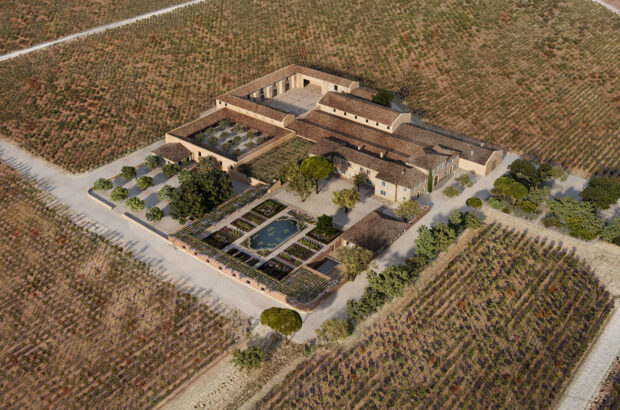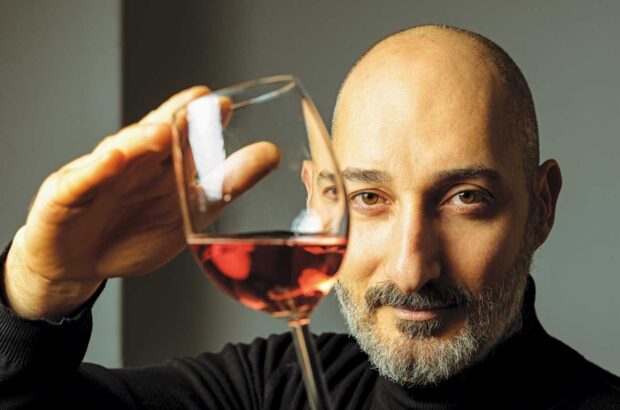The region is familiar to many holidaymakers, but its wines are often all but forgotten, thanks a host of confusing names and sub-zones, not to mention its proximity to Bordeaux. But persevere, says Stephen Brook, and you’ll find some of the best value wine in France.
Bergerac at a glance:
Bergerac AC: Area under vine: 12,800ha, of which 59% is red
Grapes: Merlot (60%), Cabernet Sauvignon, Cabernet Franc, Malbec
Maximum yield 55hl/ha (50hl/ha for Côtes de Bergerac)
Growers: 1,150
Soils clay-limestone
Montravel AC (from 2001 )Area under vine: 1,747ha
Maximum yield: 50hl/ha
Pécharmant AC Area under vine: 460ha Maximum yields: 45hl/ha
Laurent de Bosredon, owner of Château Bélingard in Bergerac, tells the story, possibly apocryphal though quite plausible, of the American tourist in Bordeaux who asked the Bordeaux wine tourism offices if they could recommend any estateshe could visit in the Dordogne. ‘Monsieur,’ came the reply, ‘there are no vineyards in the Dordogne.
’Brits know better, as they have become an occupation force in Bergerac, and have a detailed knowledge of the region, its restaurants and its wines. But to many wine lovers, Bergerac rings the least sonorous of bells. Yes, it produces wines of many types, but it’s hard to name more than a few of them.The nomenclature can be confusing. The regionis known as the Périgord, but is often referred to as the Dordogne after its main river. Bergerac and its vineyards occupy the southwestern corner of the Périgord. As a wine appellation, Bergerac is an umbrella name for a host of wines, often rather basic, that can be white, red, off-dry or sweet. Within the Bergerac zone are more specific sub-zones, such as Montravel (red, dry, and sweet), Monbazillac (sweet wines from vineyards that also produce Bergerac), Pécharmant (red only), Saussignac (sweet) and others.
It’s all very confusing, and the 13 different appellations no doubt account for the bafflement with which many wine enthusiasts regard the region. But there’s a more deep-seated reason for the neglect of Bergerac’s wines. It borders Bordeaux–literally, in the case of Montravel – and its grape varieties are essentially the same. Yet it can’t avoid being overshadowed by its grander and more illustrious neighbour to the west. ‘Bordeaux and the Dordogne have always been at war,’ says Luc deConti, one of Bergerac’s most celebrated producers.So there is a political move for Bergerac to ally itself with what is broadly known as the southwest, a sprawl of regions with little in common such as Buzet, Madiran and Irouléguy in the Basque country. I’m no marketeer, but to me this make seven less sense, although Conti, among others, finds it useful to team up with selected southwest producers for promotional purposes, as they are not in competition with each other.
Tough challenges
The murkiness of these issues – and don’t even ask about the difference between the Bergerac AC and Côtes de Bergerac AC – is regrettable, as the wines can be very good, and the prices tend to be more than reasonable. It’s rusticity that can damage the reputation of red Bergerac. Lying inland from Bordeaux, its red grapes tend to ripen about 10 days later. So often the grapes are picked at less than optimal ripeness and the wines can be astringent. Tannin management is the key here, and this also explains why the earlier-ripening Merlot is more widely planted than the Cabernet grapes
Other factors conspire against consistently high quality. Half the grapes are sold to cooperatives, which are not always focused on quality. Planting density is still fairly low, though efforts are being made to enforce higher densities that would result in more concentrated wines. And while the growing number of prestige cuvées demonstrates that Bergerac is capable of producing red wines of richness, power, and complexity, most markets still see the region as a source of cheap and cheerful wines. François-Xavier de St-Exupéry, co-owner of Château Tiregand, remarks that while there are many producers who still make rustic wines, there is a strong domestic market for that style and thus little incentive to produce wines of more elegance.
David Fourtout of Clos des Verdots is one producer who is not afraid to be ambitious. As well as his nicely crafted basic ranges, he releases the rather pretentiously named Le Vin Selon David Fourtout (the wine according to…). I find these top cuvées somewhat garagiste; that is, over-rich, extracted and alcoholic. They strive to impress, and I suspect Bergerac succeeds better within a more modest frame. Franck Pascal of Château Jonc-Blanc also relishes special cuvées, but unfortunately not all of them work out well, though his best red wine, Sens de Fruit, is balanced and long.
Pursuing a middle path, Yann Vergniaud at Le Clos du Breil makes a red wine called Expression that is certainly oaky, but also has lift and stylishness. Wines such as Hugh Ryman’s Mirabelle from Château de la Jaubertie are in a similar style. In contrast, Château Le Tap’s oddly named Cuvée Julie Jolie abjures finesse in favour of giving Merlot dramatic texture and force.
Making progress
If many producers rely on new oak to give their wines lushness, spice and complexity, Luc de Conti of Château Tour des Gendres is taking a different tack, replacing his barrels with large casks from Austria, a move followed by another fine property, L’Ancienne Cure. Conti has never been a fan of tannin extraction, and cites Jean-Claude Berrouet of Bordeaux’s Moueix group as his mentor.
Yann Jestin, a broker from Bordeaux, has restored the Château Vari property he acquired 20 years ago and converted to organic farming. His goal is to make uncomplicated but balanced wine at a modest price. His Merlot-dominated red, aged both in barriques and with staves, over-delivers interms of value. It’s a perfectly convincing expression of Bergerac, that succeeds alongside the more structured cuvées of its more ambitious growers.
Montravel, which abuts Castillon in Bordeaux, only won the AC for its red wines in 2001, and fairly strict rules about vine density have led to overall production standards being surprisingly high. There are good examples from châteaux Masbureland Le Raz, in the form of generous, vibrant reds of great intensity. Within the Saussignac AC, still a source of first-rate, inexpensive sweet wines, some growers also release fine red wines: châteaux Les Miaudoux and Le Payral are worth looking out for.
But if there’s a first appellation among equals, it’s surely Pécharmant, just east of the town of Bergerac. Here the soils are red clay, flint and gravel, rather than the clay-limestone of Bergerac itself, and the wines tend to be quite structured. Domaine Haut-Pécharmant and Château Tiregand are the best known, but there are other excellent wines from Domaine des Costes, Château Les Marnières, and Les Chemins d’Orient. The latter specialises in a range of micro-cuvées of intensity and richness, though they can be marred by high alcohol.
Quality amid the confusion
Bergerac as a whole certainly has its problems: no clear identity, being perceived (if on the radar at all) as another wannabe Bordeaux or as one of a hodgepodge of southwestern appellations; too many bog-standard wines to appease consumers seeking the cheap and simple, whereas the best winemakers know they can do far better; a lack of locomotive estates that can stand as regional flagships; and astylistic versatility that contributes to the lack of identity. A huge tourism industry mops up enough wine, much of it drably semi-sweet, to keep estates afloat, and this in turn can disguise the real qualityof the region’s top wines. These, it has to be stated, offer some of the best value in France.
Written by Stephen Brook







